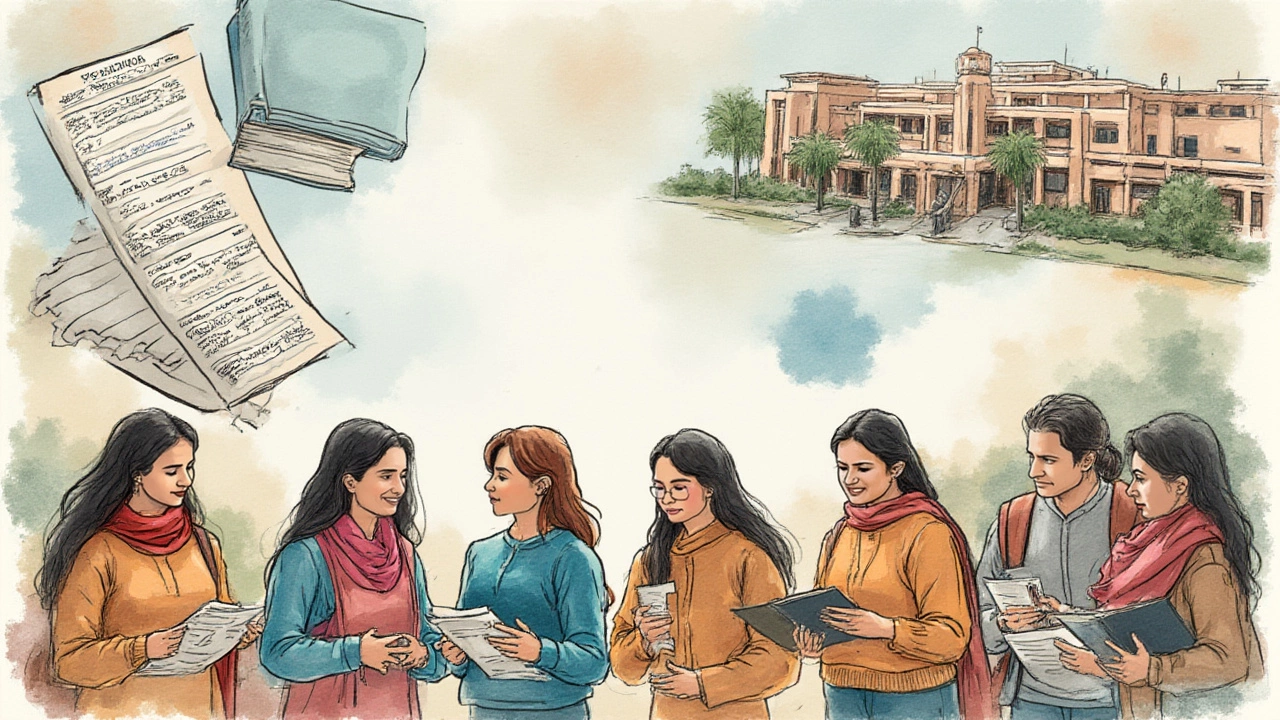While parents stress about their kids memorizing multiplication tables, there’s a hidden layer behind every lesson plan and pop quiz: the schools where teachers themselves learn their craft. You might hear the term “teacher training school” and wonder if it’s just a fancy way of saying “education college.” Here’s the twist—there’s actually a quirky and deeply rooted history to the names, types, and evolution of these teaching institutions.
What’s in a Name? The Many Aliases of Teacher Training Schools
It sounds pretty straightforward until you realize the term “teacher training school” is only one piece of the puzzle. Plenty of places call them by other names, depending on the country, the era, and the flavor of education they offer. In the United States during the late 19th and early 20th century, the go-to phrase was “normal school.” It sounds a bit odd today, but ‘normal’ comes from the French “école normale,” meaning a school to set the ‘norm’ or standard for teaching. These schools popped up everywhere and targeted young adults aiming to become teachers, especially those teaching elementary and primary grades.
Elsewhere, you’ll see ‘colleges of education’—usually tied to universities—and ‘teacher’s colleges.’ In places like Canada and the UK, ‘teacher training college’ was once the dominant label, before universities really started taking over the process. Modern times have swept in phrases like ‘schools of education,’ ‘faculties of education,’ or even ‘institutes of teacher education.’ Some regions use ‘pedagogical institutes’ or ‘teacher preparation programs’ (often for more specialized or alternative pathways into the job). They’re all built for the same goal: prepping people to teach the next generation. Underneath all those names, you’ll find a curriculum focused on educational psychology, subject expertise, classroom management, and practical teaching experience.
To illustrate just how many titles these schools have, check this out:
| Name Type | Region/Usage | Main Purpose |
|---|---|---|
| Normal School | US, France, historical | Set teaching standards, train new teachers |
| Teacher’s College | UK, Canada, Australia | Professional teacher prep, often for specific subjects |
| College/School of Education | Modern US, worldwide | Undergraduate & graduate education degrees |
| Pedagogical Institute | Eastern Europe, Asia | Academic, theory, and practice in education |
| Faculty of Education | Universities globally | Advanced research & teacher certification |
So, if you hear someone say they went to a “normal school” or “faculty of education,” just know you’re talking about the same fundamental idea—a formal space to shape new teachers before they ever step into a classroom.

How Do Teacher Training Schools Work? Inside the Classroom and Out
The way these places function is surprisingly layered. First up, students (future teachers) don’t just attend regular lectures. They’re enrolled in programs that blend theory and plenty of hands-on training. This means you’ll find modules like educational psychology, childhood development, and teaching methods—yes, they actually learn how to wrangle attention from a whole room of chatty kids. But these schools also pack in practicums or student-teaching experiences. That’s where budding teachers get thrown into the deep end: they’re paired with mentor teachers in real schools, actually running classes.
Some facts to chew on: According to the U.S. Department of Education (data from 2023), the average Bachelor-level teacher prep program lasts four years, with about 12–16 weeks dedicated to full-time teaching in a classroom. In India, there are separate “B.Ed.” (Bachelor of Education) colleges specifically focused on this, while in Germany, many universities run their own Pedagogical Faculties, mixing public sector missions with training teachers for all age groups and types of schools. Meanwhile, urban teacher residency programs—popular in big American cities like Boston or Denver—work as crash courses where career-changers (like former engineers) train at partner schools while earning a teaching credential.
It’s not all studying and blackboard practice, though. The world of teacher training is filled with professional debates. Should future teachers specialize early (for instance, picking a subject in college that they’ll teach), or should everyone get a general education first? How much time should be spent in real classrooms before graduating? What about online teacher prep—does a Zoom class really prepare someone for the chaos of a wriggly group of eight-year-olds? These questions are why you’ll notice so many different approaches around the world.
Here are a few practical tips for anyone considering a path into teaching:
- Research the reputation and track record of the specific teacher training school or college. Accreditation really matters—the best programs have strong ties to public schools and solid job placement rates.
- Check program requirements: Do you want a shorter certificate for teaching high school, or the full four-year ride for elementary education?
- Ask about placement opportunities: The best teacher training school experiences will guarantee real classroom placements and lots of mentorship.
- Look for programs that stress classroom management and practical skills—not just theory. Being a great teacher means juggling a roomful of unpredictable, energetic kids.
- Explore new trends: Some schools now offer micro-credentials in things like digital learning, ESL (English as a Second Language), or special education, which can boost your job prospects and ability to make a difference.
For parents like me (my son Zane loves science; Tangerine is an art nut), you start to appreciate how much work goes into prepping future teachers—not just academics, but learning how to inspire and connect with all kinds of students. Behind every dedicated teacher, there’s a web of training, feedback, and polishing that starts in teacher training schools, whatever they’re called.

Impact on Education: Why Teacher Training Schools Still Matter Today
Here’s something a lot of folks miss: the ripple effect of great teacher preparation is massive. Good teacher training isn’t just about giving someone a certificate to hang on their wall. Studies out of the National Center for Education Statistics (NCES) show that students taught by well-prepared teachers consistently outperform their peers on standardized tests, especially in reading and math. Singapore and Finland—countries that top the global education charts—require all their teachers to go through selective, in-depth teacher training programs, often at the master’s degree level.
It’s not just about knowledge. Teacher training schools help new teachers develop empathy, communication skills, and resilience. The average teacher in the U.S. stays on the job around 14 years (according to 2024 NEA data), but those who train at programs with stronger mentoring and practicum experiences are more likely to stay longer. Basically, training matters.
There’s constant change, too. Emerging trends like inclusive education, technology in the classroom, and trauma-informed teaching show up quickly in teacher training curriculums. For example, many U.S. colleges now require at least one course on diversity and another on integrating tech (classroom tablets, apps, even AI). Post-pandemic, more programs have experimented with hybrid options—think practical in-school placements paired with online video reflection and assessment. Yet, there’s always pushback: nothing, not even the shiniest EdTech tool, can quite replace face-to-face student teaching for helping new teachers manage the real-world pressures of education.
Something less obvious—but hugely important—is how these schools shape education policy. Many top teacher training colleges also run research projects, advising governments on curriculum reform and teacher standards. After all, building better teachers reshapes everything from exam scores to life skills. For my own kids, I know there’s no substitute for a teacher who’s been trained to notice when someone’s struggling—or teach a fresh concept in a way that sticks.
So if you ever find yourself wondering about the people who teach your children—or if you’re thinking of teaching yourself—remember: teacher training schools (whether called normal schools, education colleges, or anything else) have a way bigger role in the future than most people realize. Every new approach to reading, every creative classroom hack, every moment of encouragement—odds are, those started in the heart of a teacher training school, by people who decided that teaching really is a craft worthy of studying. That’s something to think about next time you see a perfectly organized classroom, or a group of kids lit up by a lesson they’ll never forget.
